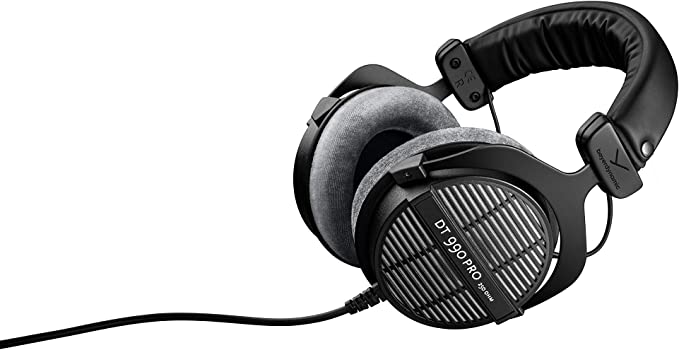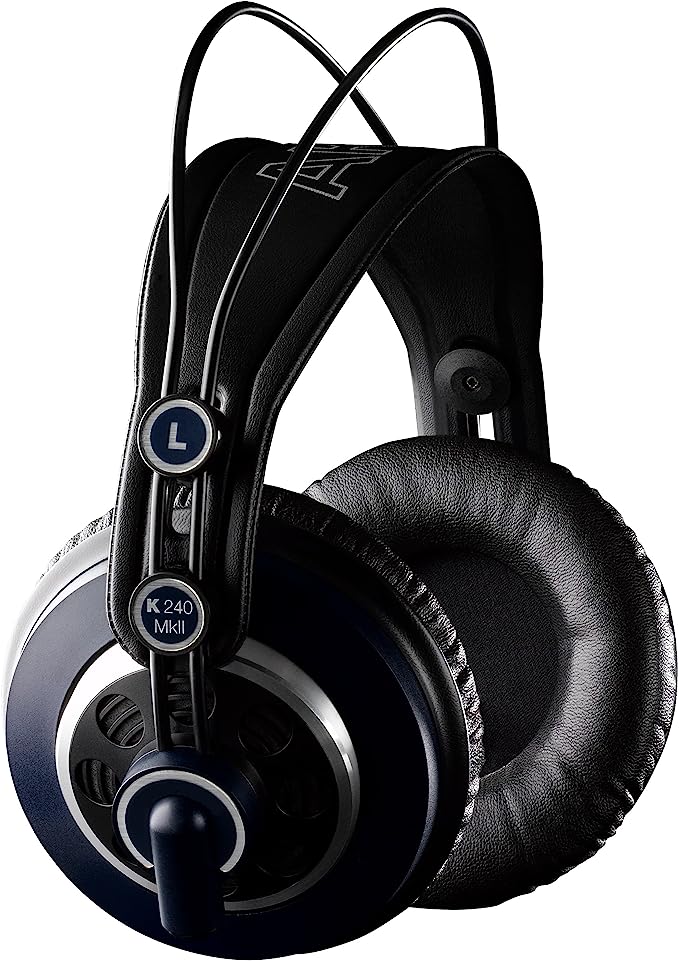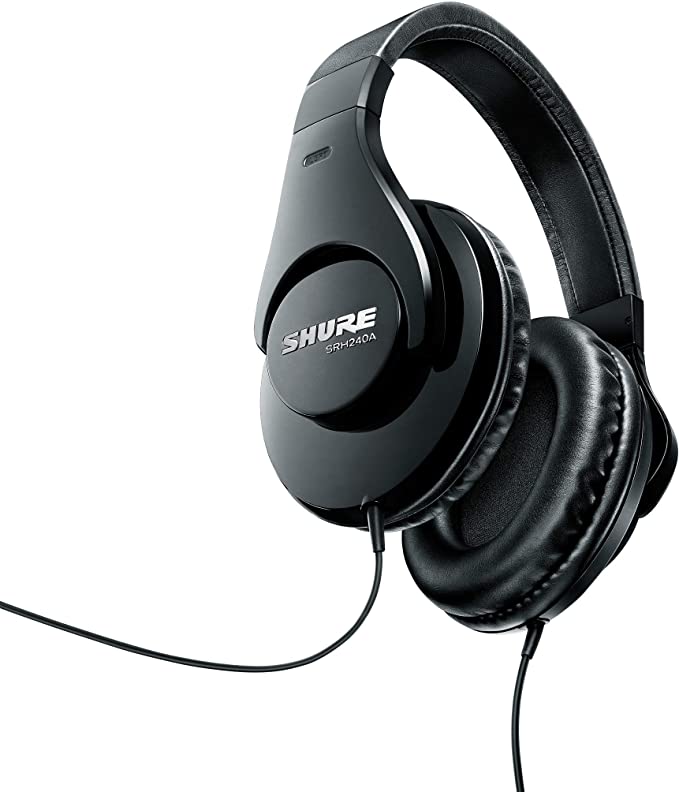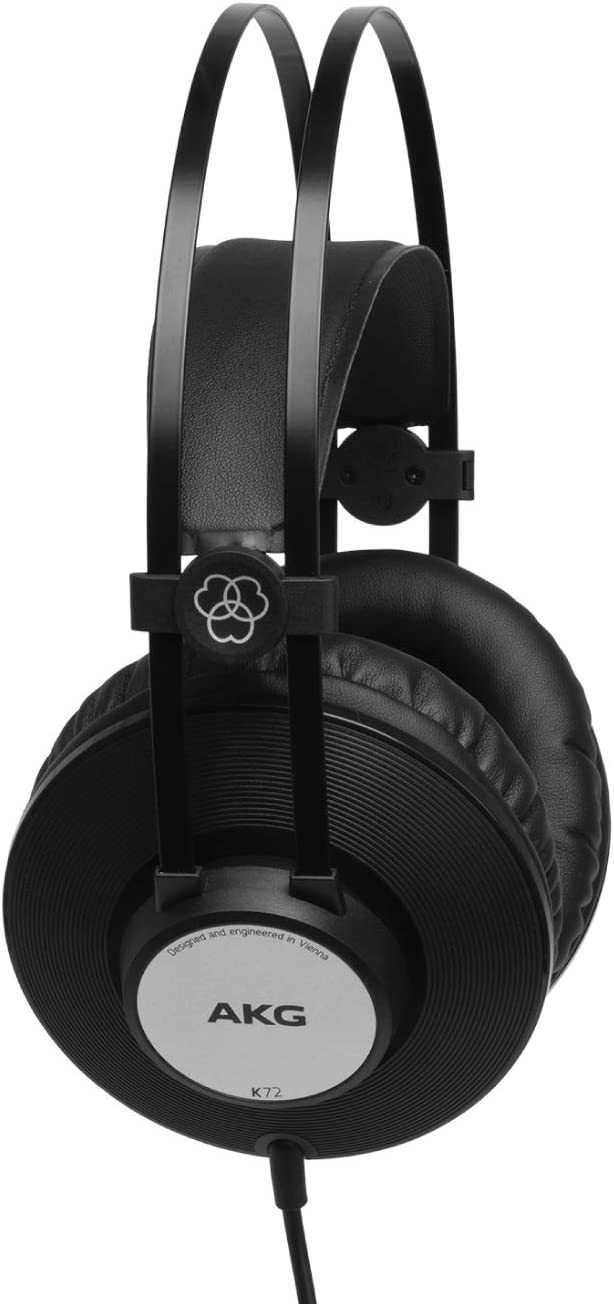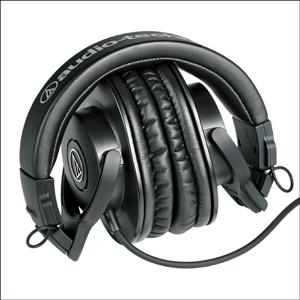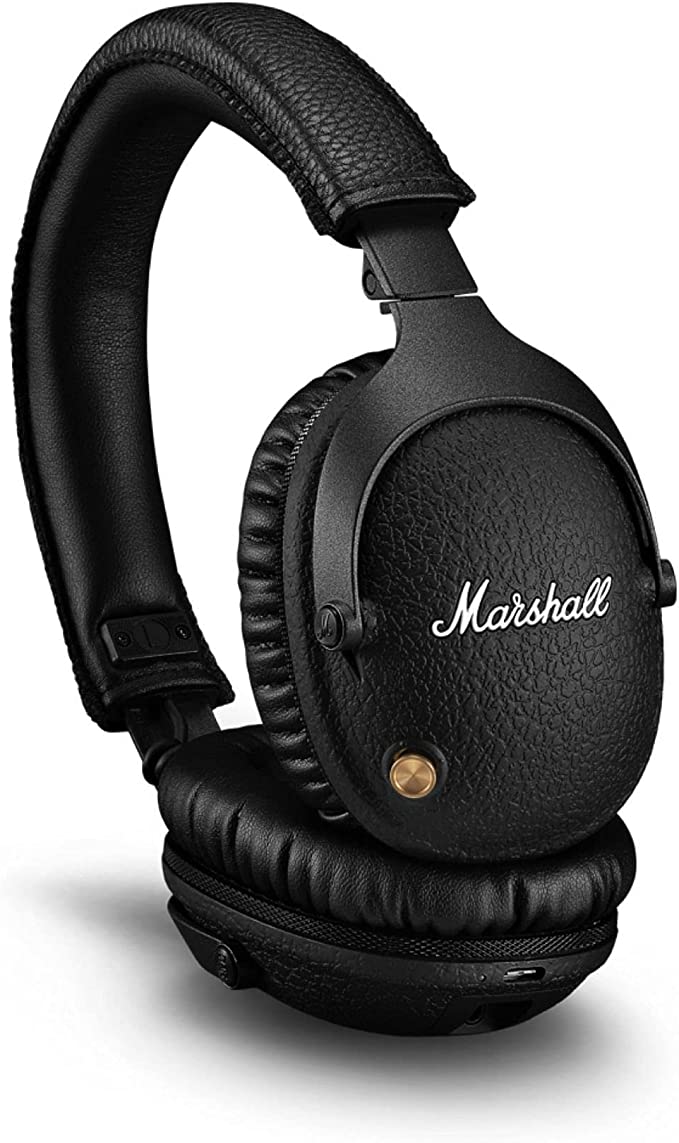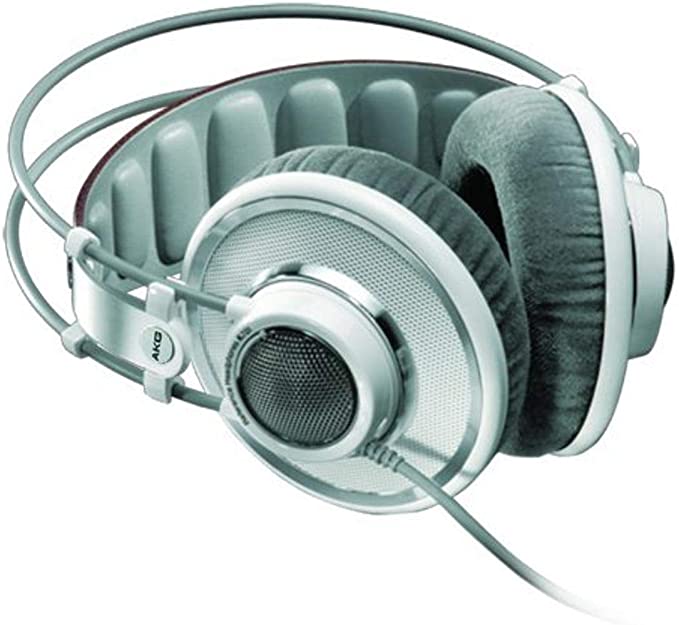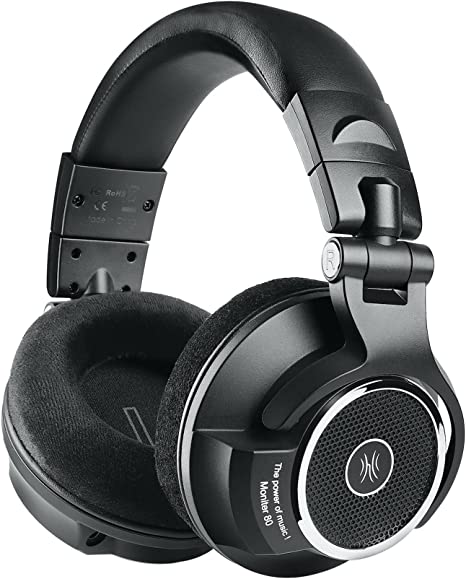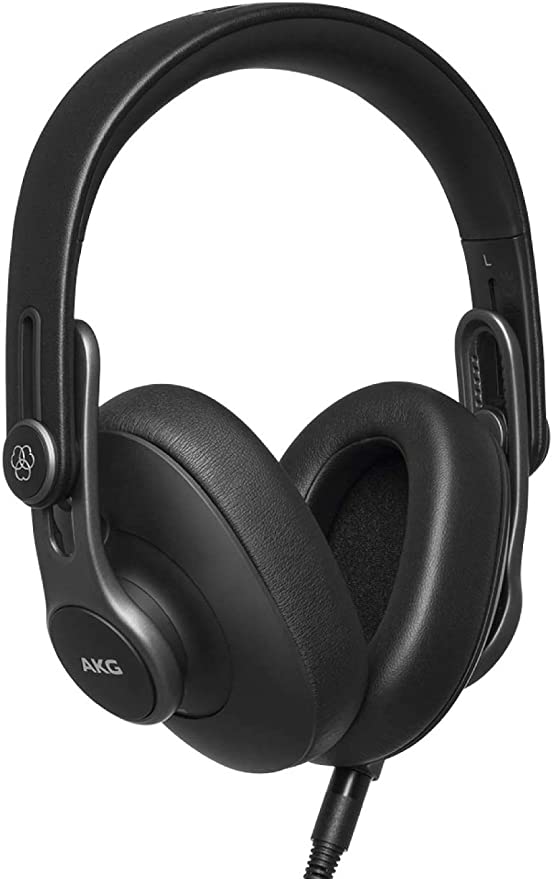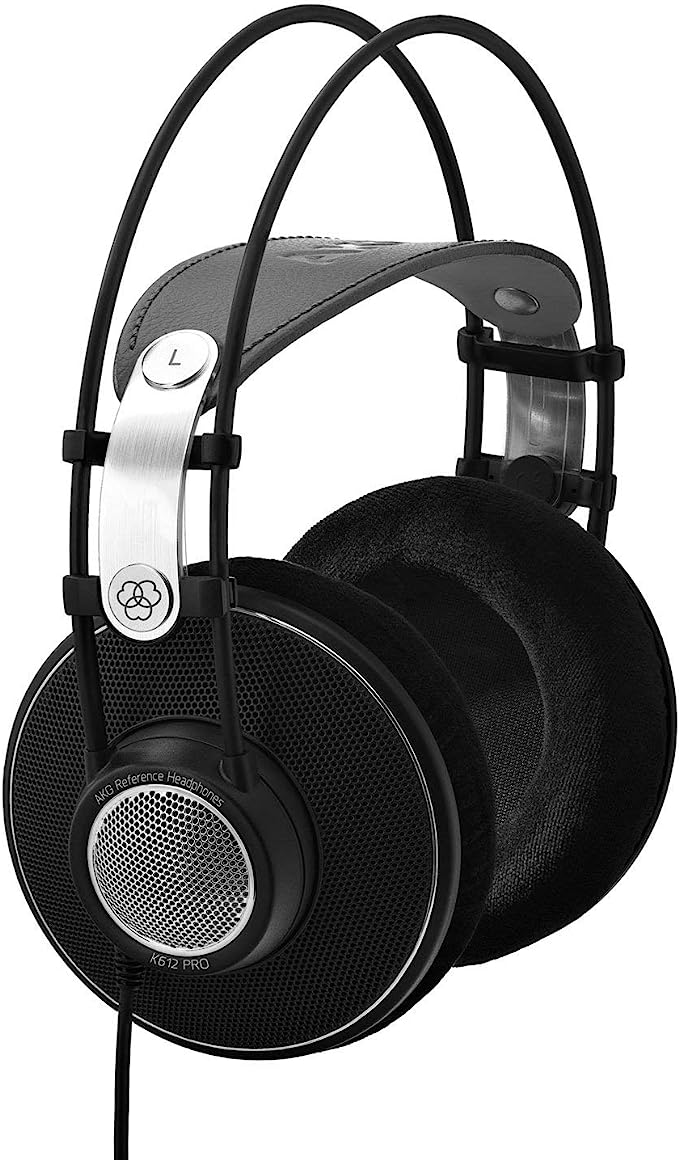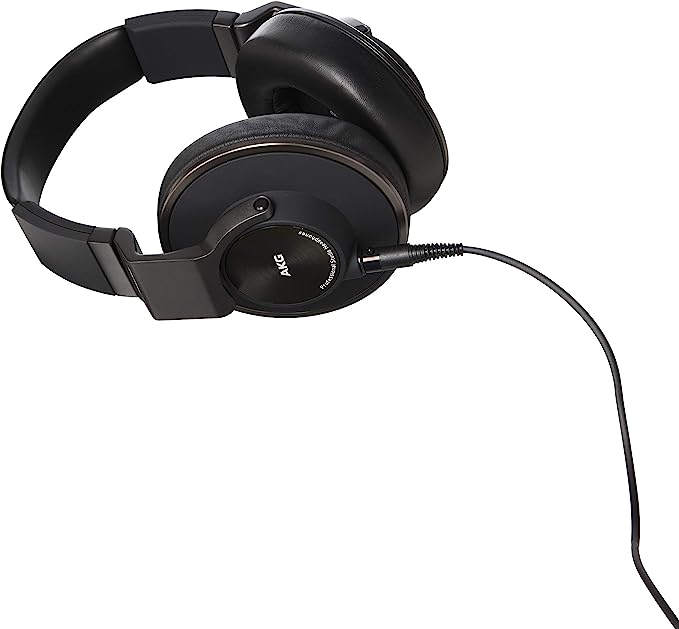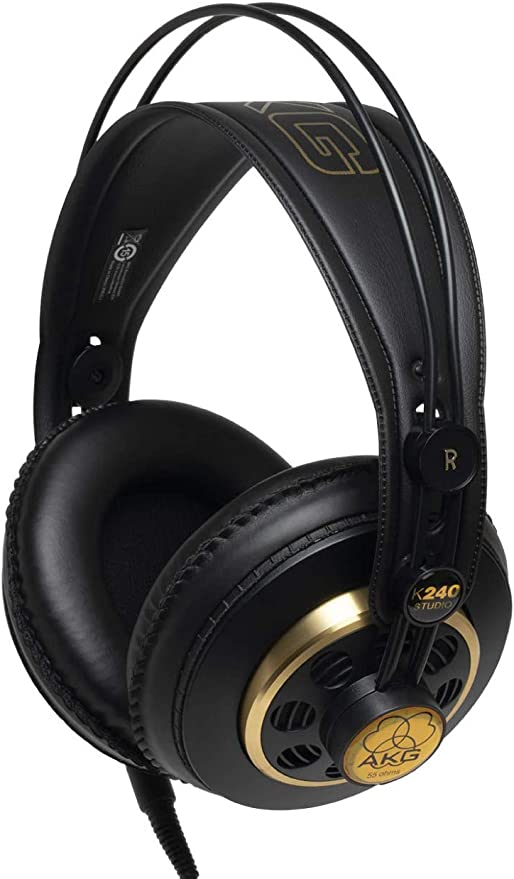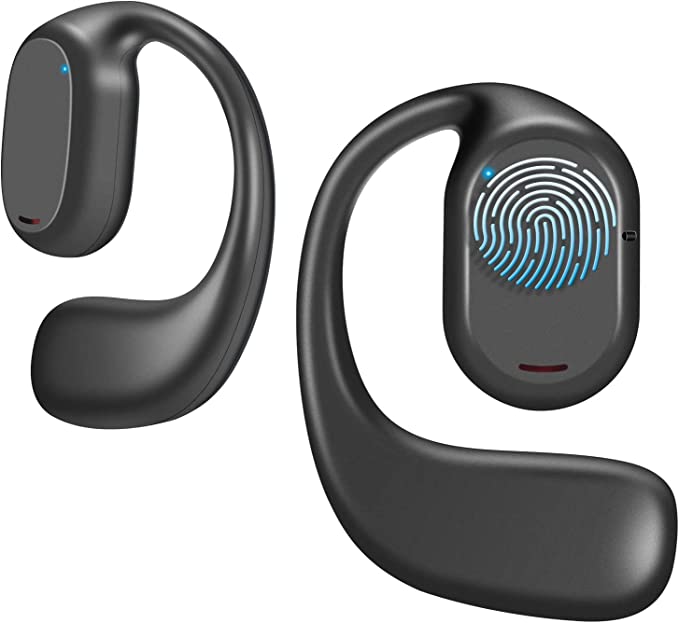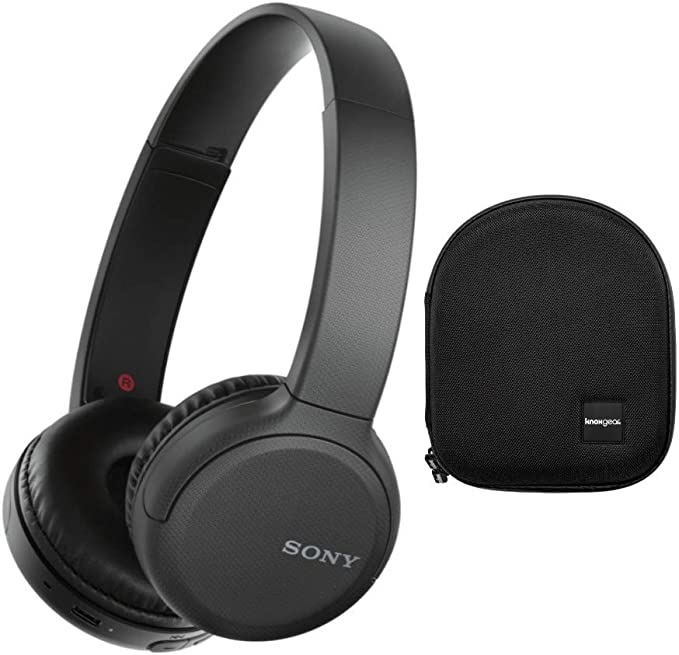Shure SRH440A Over-Ear Wired Headphones - Enhanced Audio Quality
Update on May 29, 2025, 2:06 p.m.
Ever poured your heart into a song, a podcast, or a voice-over, only to find it sounds unexpectedly different when played on your car stereo, a friend’s speakers, or those ubiquitous white earbuds? That jarring disconnect, the “why does it sound like that?” moment, is a frustration shared by countless creators. It often stems from a simple, yet profound, problem: not truly hearing the unvarnished truth of your audio during the creation process. In the complex world of sound, finding a reliable “true north”—a way to perceive audio with uncolored accuracy—is paramount. This is where professional monitoring headphones step onto the stage, and today, we’re taking a close-up look at one such contender: the Shure SRH440A Over-Ear Wired Headphones. These aren’t just for listening; they’re designed as a critical tool for those who shape sound.

Deconstructing “Studio Sound”—The Anatomy of Neutrality
You’ll often hear terms like “professional studio grade” or a “transparent, natural sound signature” associated with headphones like the SRH440A. But what do these phrases, beyond the marketing sheen, actually signify in the realm of audio science?
Imagine standing before a masterpiece in an art gallery. Would you prefer to view it through a perfectly clear, clean pane of glass, or one tinted змінюється (sepia), subtly altering the artist’s intended hues? Most would choose the former. A “transparent” or “neutral” sound signature in headphones is akin to that clear pane of glass. It strives to reproduce the audio signal with the least possible alteration, addition, or subtraction. Unlike many consumer-focused headphones that might intentionally boost the bass for a more “exciting” or “boomy” feel, or accentuate high frequencies for a perceived sense of “sparkle,” studio monitoring headphones aim for a flatter, more even response across the audible spectrum.
This neutrality isn’t about creating a “boring” sound; it’s about delivering an honest one. For anyone involved in recording, mixing, or mastering audio, this honesty is non-negotiable. When an audio engineer tweaks the equalization of a vocal track or adjusts the level of a bass guitar, they need to be confident that the changes they’re making are based on the actual sonic content of the recording, not on the idiosyncrasies of their playback system. If your headphones are artificially hyping the bass, you might mistakenly reduce the bass in your mix, leading to a thin, weak sound on other, more balanced systems. The Shure SRH440A, with its stated aim of providing “detailed accurate audio across an extended range,” is engineered to be that trustworthy reference, that clear window into your sound. As one reviewer, Jay K., noted of the SRH440A’s predecessor (the SRH440, upon which the SRH440A is developed with “new & improved features”), it was the “most accurate, neutral sounding closed cans among the eight headphone models that I have compared” under $100, underscoring this commitment to neutrality that Shure is known for.

The Full Spectrum—Unpacking Frequency Response & The Power of Drivers
One of the most talked-about specifications for any audio transducer is its frequency response. This is, essentially, the headphone’s “vocal range”—the span of audible frequencies, from the deepest rumbles to the highest, most delicate whispers, that it can reproduce, and how evenly it does so.
Enhanced Frequency Response: Painting with All the Colors
The Shure SRH440A product information highlights an “enhanced frequency response” optimized for professional audio devices. While the main product page doesn’t list a specific numerical range, the initial draft article, forming part of our source material, mentioned a potential range of 5Hz to 25kHz. To put this in perspective, healthy young human hearing typically spans from about 20Hz to 20,000Hz (or 20kHz). A range like 5Hz-25kHz, if accurate, suggests an ability to reproduce frequencies even below the typical threshold of human hearing (infrasonics, which can sometimes be felt more than heard) and well into the ultrasonic range (though the perceptual impact of frequencies above 20kHz is a subject of ongoing discussion).
What an “enhanced” or “extended” frequency response truly means for the user is the potential to hear everything present in the recording. Imagine a painter. If their palette is missing certain shades of blue or red, their artwork will inevitably be an incomplete representation of their vision. Similarly, if headphones can’t accurately reproduce the very low frequencies of a pipe organ’s pedal tones, the sub-bass thump of an 808 kick drum, or the airy, high-frequency harmonics that give a cymbal its shimmer and a violin its breathiness, then the listener (and critically, the creator) is working with an incomplete sonic picture. This detailed reproduction allows for more precise adjustments. For instance, during mixing, you might identify an unwanted low-frequency rumble that muddies the track, or pinpoint an overly bright cymbal that needs taming—details that less capable headphones might obscure. Users often praise the clarity of the SRH440A; as Simon, a verified purchaser of the Gen 2 model, put it, “The clarity and distinction between different EQ ranges is amazing.” This directly speaks to the practical benefit of a well-executed frequency response.
This performance is also linked to how well the headphones work with other gear. The SRH440A’s impedance and power handling are “optimized for performance with all professional audio devices.” Impedance (measured in Ohms) is the headphone’s electrical resistance to the audio signal, and power handling dictates how much power it can take before distorting or being damaged. Professional audio interfaces and amplifiers are generally designed to drive headphones with a wider range of impedances effectively, ensuring the headphones receive enough clean power to perform at their best and maintain that detailed frequency response.
The Engine Room: The Heart of the Sound—40mm Neodymium Drivers
The magic of converting an electrical audio signal into the sound waves that grace our ears happens within the headphone drivers. The draft article for the SRH440A refers to “40mm neodymium dynamic drivers.” Let’s break that down.
“Dynamic driver” is the most common type found in headphones. Think of it as a miniature version of a traditional loudspeaker. It typically consists of a diaphragm (a thin, semi-rigid membrane), a voice coil (a coil of fine wire attached to the diaphragm), and a magnet assembly. When the audio signal (an electrical current) flows through the voice coil, it creates a fluctuating magnetic field that interacts with the field of the permanent magnet. This interaction causes the voice coil, and thus the diaphragm attached to it, to vibrate rapidly back and forth. These vibrations create pressure waves in the air—sound.
The “40mm” refers to the approximate diameter of the diaphragm. Generally, larger diaphragms can move more air and are often better at reproducing lower frequencies with authority, though a myriad of other design factors also play crucial roles. “Neodymium” refers to the type of magnet used. Neodymium magnets are prized in audio applications because they are incredibly powerful for their size and weight compared to older ferrite magnets. This allows for smaller, lighter driver designs without sacrificing magnetic strength, leading to greater efficiency (more sound output for a given amount of power) and potentially faster transient response (the ability to accurately reproduce rapid changes in sound, like the crack of a snare drum). For the user, this sophisticated “engine room” translates to the headphones being able to accurately and efficiently transform the electrical nuances of the audio signal into a rich, detailed sonic experience, essential for discerning the subtle dynamics in a piece of music or the precise articulation of spoken word.

Your Personal Sonic Bubble—The Magic of Closed-Back, Over-Ear Design
Beyond what happens inside the earcup, the physical design of the headphones themselves plays a massive role in shaping the listening experience, especially for monitoring purposes. The Shure SRH440A employs an “over-ear closed-back circumaural design.”
Over-Ear (Circumaural) Comfort and Seal
“Circumaural” is the technical term for “over-ear.” This means the earpads are designed to encircle your entire ear (the pinna) and rest on the side of your head, rather than pressing directly onto the ear itself like “on-ear” (supra-aural) headphones do. This design typically offers two significant benefits:
- Comfort for Extended Use: By distributing pressure over a larger area and avoiding direct pressure on the sensitive cartilage of the ear, over-ear headphones are generally considered more comfortable for the long listening sessions that are common in studio work or critical listening.
- Creating an Acoustic Seal: A well-designed over-ear earcup, with appropriately chosen earpad material and cushioning, creates a seal around the ear. This seal is crucial for consistent bass response (preventing low frequencies from “leaking” out) and forms the first line of defense in acoustic isolation.
The Closed-Back Fortress: Isolation and Focus
The “closed-back” part of the description refers to the outer shell of the earcup being solid and non-perforated. This construction is fundamental to one of the SRH440A’s key strengths: “Over-ear closed-back circumaural design rests comfortably over the ears and reduces background noise.”
The science here is straightforward: a solid barrier physically blocks external sound waves from reaching your ears. It also contains the sound produced by the headphone drivers, preventing much of it from leaking out into the surrounding environment. This provides several key advantages in a professional or even a home studio context:
- Focus and Immersion: By significantly reducing ambient noise—the hum of a computer, chatter in an adjacent room, traffic sounds—closed-back headphones allow you to focus entirely on the audio you’re working with. This creates a more immersive listening experience and allows for the detection of finer details that might otherwise be masked. Many users, like D\&N Janke reviewing an earlier iteration, appreciated this aspect, noting they could use the headphones “as earmuffs to block out the sound” even when not listening to audio.
- Preventing Microphone Bleed: This is critical during recording. If a vocalist is wearing headphones to monitor their performance or a backing track, sound leaking from open-back headphones could be picked up by the sensitive vocal microphone, contaminating the recording. Closed-back designs minimize this “headphone bleed.”
- Predictable Bass Response: The sealed chamber created by a closed-back design can influence bass perception, often leading to a more direct and impactful low-end feel compared to open-back headphones, though careful design is needed to prevent unwanted resonances or a “boomy” sound. The goal for a monitoring headphone like the SRH440A is accurate bass, not necessarily exaggerated bass.
For someone working in a less-than-ideal acoustic environment, like a typical home studio which might not have professional sound treatment, the isolation provided by a closed-back design like the SRH440A is invaluable. It helps create a consistent listening environment, making your mixing decisions more transferable to other playback systems. Matthew P., a music producer and sound engineer, highlighted this when comparing the SRH440A (Gen 2) to his other headphones, noting that closed-back designs with good sealing are “very good with sound isolation.”
Built for the Journey—Durability, Comfort, and Thoughtful Ergonomics
Professional audio equipment isn’t just about pristine sound; it’s also about being a reliable workhorse. Headphones in a studio environment, or even in a dedicated enthusiast’s setup, are often subjected to hours of use daily, picked up and put down countless times, and sometimes transported between locations.
Durability & Design for Use: A Tool, Not a Toy
Shure emphasizes that the SRH440A features a “sleek, durable design looks great on camera and withstands the rigors of constant use.” This points to an understanding that these headphones are tools intended for serious work. While “sleek” and “looks great on camera” cater to the modern creator who might be podcasting or streaming, the “durability” aspect is paramount for longevity and return on investment. This often translates to robust plastics, metal reinforcement in key stress points like the headband, and swivels and hinges designed for repeated motion. D. Click’s review of the earlier SRH440 praised its solid build: “They are nice and heavy(in a good way) and VERY solidly built… The plastics used on the headphones are very solid and of high quality.” The SRH440A, being developed upon this foundation with improvements, carries this expectation of resilience.
Comfort for the Long Haul: The Science of Not Noticing
For any tool that’s used for extended periods, comfort is not a luxury—it’s a necessity. Listener fatigue can compromise focus and decision-making. The SRH440A addresses this with an “ultra-comfortable lightweight headband” and an “adjustable headband.”
The science of headphone comfort involves several factors:
- Weight and Weight Distribution: Lighter headphones generally cause less strain over time. More importantly, how that weight is distributed across the top of the head via the headband padding and shape is crucial. The SRH440A weighs in at 9 ounces (around 255 grams), which is reasonably light for a full-sized over-ear model.
- Clamping Force: This is the pressure the earcups exert on the sides of your head. Too little, and the headphones won’t seal properly or stay in place. Too much, and it quickly becomes uncomfortable. An adjustable headband allows users to find a balance.
- Earcup Design: The size, shape, depth, and material of the earpads are critical. They need to be large enough to comfortably encircle the ear, deep enough so the ear doesn’t press against the driver housing, and made of a material that is breathable and soft yet provides a good acoustic seal.
User feedback on comfort for the earlier SRH440 model was somewhat mixed regarding the stock earpads; some users (like D. Click, tj, and Road Warrior) found them a bit stiff or shallow and opted to replace them with the earpads from the higher-end Shure SRH840 model, reporting significant improvements in comfort. The SRH440A, as the “2022 Version” with “NEW & IMPROVED FEATURES,” likely reflects Shure’s attention to such feedback. John636, reviewing the Gen 2 SRH440A, stated, “They’re no more comfy than everything else and these are pretty comfy,” suggesting a good baseline of comfort for the newer iteration. The “collapsible construction” also adds to ergonomic convenience for storage and portability.
The Unbreakable (Well, Almost) Link—The Detachable, Locking Cable
One of the most consistently praised practical features of Shure’s SRH headphone line, including the SRH440A, is its cable system: a “3 m (10 ft.) Detachable straight cable” that “twists to lock into a jack on the headphone.” This might seem like a small detail, but in the world of professional audio, it’s a stroke of practical genius.
The Practical Genius of a Detachable, Locking System
Why is this so important?
- Repairability and Longevity: Cables are, by far, the most common point of failure in wired headphones. They get snagged, twisted, rolled over by chairs, and generally abused. With a permanently attached cable, a damaged cable often means a dead headphone or a complicated, expensive repair. A detachable cable means that if the cable fails, you simply unplug it and replace it with a new one—a much cheaper and quicker solution that significantly extends the usable life of the headphones.
- Customization (to some extent): While the SRH440A comes with a 10-foot straight cable, the detachable nature opens the door (for some Shure models, and potentially via third-party options if compatible) to using different cable lengths or types if desired, though the locking mechanism makes third-party compatibility more specific.
- Preventing Accidental Unplugs & Damage: The bayonet-style locking mechanism is crucial. A simple twist secures the cable to the earcup. This prevents the cable from being accidentally yanked out during a critical recording session or a moment of intense focus. It also protects the internal connection point on the headphone from the stress of such pulls.
- Storage and Transport: Removing the cable makes the headphones easier and safer to pack away.
User reviews are almost universally positive about this feature. D. Click called the removable locking cable a “pretty sweet feature to save future trouble.” Alex from a 2010 review highlighted it as a key reason for his purchase: “I also wanted a set that offered the replaceable cable and ear cups option as decent headphones can last a long time but these two parts always wear out before decent drivers do.”
The provided 10-foot (3-meter) straight cable is ample for most studio situations, allowing musicians to move around a bit while tracking, or engineers to reach their gear without being tethered too tightly. However, as some users like “tj” (reviewing the Gen 1) noted, this length can be “incredibly long and bulky” for more casual or portable use, sometimes leading them to seek shorter aftermarket solutions, which the detachable system, in principle, allows for if compatible options exist.
Beyond the Box—The Listening Experience and What It Means for You
So, we’ve explored the science behind the neutral sound signature, the intricacies of frequency response and driver design, the acoustic benefits of the closed-back, over-ear construction, and the practical advantages of durability, comfort, and that wonderful detachable cable. But how do all these elements coalesce into an actual listening experience, and what does it mean for you, the creator or the critical listener?
Ultimately, the Shure SRH440A aims to be an instrument of revelation. It’s designed not to flatter your music with artificial enhancements, but to present it with stark, unvarnished honesty. This means that if there are flaws in your recording—a slightly off-key vocal, a muddy bassline, excessive sibilance, an unbalanced stereo image—the SRH440A is more likely to expose them. While this might be a confronting experience at first, especially if you’re used to more “forgiving” or “colored” headphones, it’s an invaluable asset in the long run. It forces you to become a better recordist, a more meticulous mixer, a more discerning listener.
Many users report hearing details in familiar tracks that they’d never noticed before when using headphones like these. Alex, in his detailed 2010 review, mentioned, “I found myself relishing music even more through these as I began to hear it in a whole new way… You’ll also notice other parts of the music that cheaper headphones can’t reproduce when listening to CD’s.” This heightened perception is precisely what monitoring headphones are for.
It’s also worth briefly touching on a couple of common topics in the headphone world. Some users, like Alex, mentioned that headphones like these “sound their best amped,” meaning they benefit from a dedicated headphone amplifier, especially if your audio source (like a basic computer output or a smartphone) doesn’t have a particularly robust headphone output stage. While the SRH440A is optimized for professional devices which generally have capable outputs, a good clean amplifier can ensure the headphones are receiving enough current to control the drivers properly, especially at higher listening levels or with very dynamic material, leading to tighter bass and clearer overall sound.
Then there’s the concept of “burn-in.” Some audiophiles believe that headphones require many hours of playback before their drivers “settle” and reach their optimal sonic performance. From a purely mechanical perspective, it’s plausible that the diaphragm and its suspension might undergo some very subtle physical changes during initial use. However, the audible effects of burn-in are often debated, and significant changes are unlikely. The most substantial change usually occurs in the listener’s brain as it adapts to a new sound signature. With monitoring headphones like the SRH440A, their strength lies in their consistent, accurate performance right out of the box, providing a reliable reference from day one.

Concluding Thoughts: Finding Your Sonic Truth
In the often-bewildering world of audio gear, where subjective preferences and marketing hype can cloud judgment, the Shure SRH440A Over-Ear Wired Headphones stand as a testament to the enduring value of accuracy and functional design. They are not intended to be the most “exciting” or “bass-heavy” headphones on the market. Instead, they offer something far more valuable to the serious creator or listener: a clear, honest reflection of the audio itself.
By understanding the science behind their neutral sound signature, their capable frequency response, the isolating nature of their closed-back design, and the thoughtful engineering of their drivers and practical features, we can appreciate them not just as listening devices, but as precision instruments. They empower musicians, podcasters, sound engineers, and even discerning music lovers to engage more deeply with the intricacies of sound, to make better creative decisions, and to ultimately get closer to the “unvarnished truth” that lies within every recording. The journey of audio discovery is a continuous one, and tools like the Shure SRH440A serve as reliable companions along that path, helping to ensure that what you hear is what truly is.
